 W
WThe 3rd Division was an infantry division in the Imperial Japanese Army. Its call sign was the Kō-heidan (幸兵団).
 W
WThe '5th Division' was an infantry division of the Imperial Japanese Army. Its call sign was the Koi (Carp) Division . The 5th Division was formed in Hiroshima in January 1871 as the Hiroshima Garrison , one of six regional commands created in the fledgling Imperial Japanese Army. Its personnel were drafted from Hiroshima, Yamaguchi and Shimane.
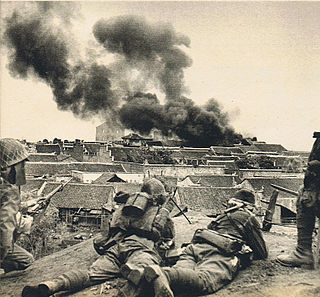 W
WThe 6th Division was an infantry division in the Imperial Japanese Army. Its call sign was the Bright Division .
 W
WThe 9th Division was an infantry division in the Imperial Japanese Army. Its tsūshōgō code name was the Warrior Division or 1515 or 1573. The 9th Division was one of six infantry divisions newly raised by the Imperial Japanese Army after the First Sino-Japanese War (1894–1895). Its troops were recruited primarily from communities in the Hokuriku region of Japan (Ishikawa, Toyama and Fukui, with its headquarters located within the grounds of Kanazawa Castle.
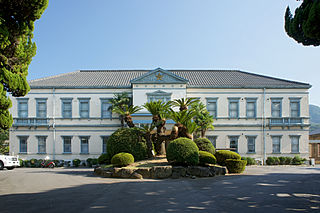 W
WThe 11th Division was an infantry division in the Imperial Japanese Army. Its tsūshōgō code name was the Brocade Division , and its military symbol was 11D. The 11th Division was one of six infantry divisions newly raised by the Imperial Japanese Army after the First Sino-Japanese War (1894–1895). The division received its colors on 1 October 1898 and was disbanded in September 1945. Its troops were recruited primarily from communities in the four prefectures of the island of Shikoku. It was originally headquartered in the city of Zentsuji, Kagawa, and its first commander was Lieutenant General Nogi Maresuke.
 W
WThe 16th Division was an infantry division in the Imperial Japanese Army. Its tsūshōgō code name was the Wall Division , and its military symbol was 16D. The 16th Division was one of four new infantry divisions raised by the Imperial Japanese Army in the closing stages of the Russo-Japanese War (1904–1905). With Japan's limited resources towards the end of that conflict, the entire IJA was committed to combat in Manchuria, leaving not a single division to guard the Japanese home islands from attack. The 16th Division was initially raised from men in the area surrounding Kyoto 18 July 1905 under the command of Lieutenant General Yamanaka Nobuyoshi.
 W
WThe 18th Division was an infantry division of the Imperial Japanese Army. Its tsūshōgō code name was the Chrysanthemum Division . The 18th Division was one of two infantry divisions newly raised by the Imperial Japanese Army immediately after the Russo-Japanese War (1904–1905) as part of the post war expansion of the standing Japanese military. The division received its colors on 13 November 1907. Its original headquarters was in a suburb of the city of Kurume in Fukuoka Prefecture.
 W
WGeneral Prince Yasuhiko Asaka was the founder of a collateral branch of the Japanese imperial family and a career officer in the Imperial Japanese Army. Son-in-law of Emperor Meiji and uncle by marriage of Emperor Hirohito, Prince Asaka was commander of Japanese forces in the final assault on Nanjing, then the capital city of Nationalist China, in December 1937. He is alleged to have been a perpetrator of the Nanking massacre in 1937, but he was never charged.
 W
WIsamu Chō was an officer in the Imperial Japanese Army known for his support of ultranationalist politics and involvement in a number of attempted coup d'états in pre-World War II Japan.
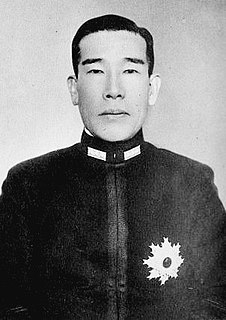 W
WIncorporates information and translations from the corresponding article in the Japanese Wikipedia
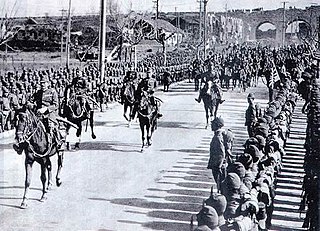 W
WThe Japanese Central China Area Army was a field army of the Imperial Japanese Army during the Second Sino-Japanese War.
 W
WIwane Matsui was a general in the Imperial Japanese Army and the commander of the expeditionary force sent to China in 1937. He was convicted of war crimes and executed by the Allies for his involvement in the Nanjing Massacre.
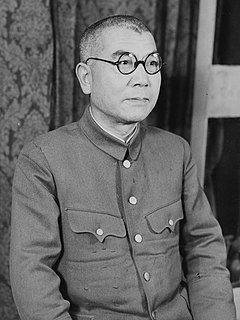 W
WAkira Mutō was a general in the Imperial Japanese Army during World War II. He was convicted of war crimes and was executed by hanging.
 W
WKesago Nakajima was a lieutenant general in the Imperial Japanese Army during the Second Sino-Japanese War, who has been implicated in the Nanjing massacre of December 1937.
 W
WLieutenant General Sasaki Tōichi was a Japanese soldier who served in the Imperial Japanese Army. He was known as an expert on Chinese affairs, had close relationships with leading figures in the Kuomintang (KMT)'s National Revolutionary Army during the 1920s, and expressed sympathy for their cause. A violent encounter with KMT forces during the 1928 Jinan incident, however, led him to abandon his pro-KMT stance, and adopt a pessimistic attitude toward China. He later served as chief military advisor to the Japanese puppet state Manchukuo, and during the Second Sino-Japanese War, he was involved in perpetrating the Nanjing massacre. In the last days of the Second World War, Sasaki was captured by Soviet troops and handed over to the Chinese communists, who interned him at the Fushun War Criminals Management Centre, where he died in 1955. He was a prolific writer, and left detailed accounts of his experiences in China.
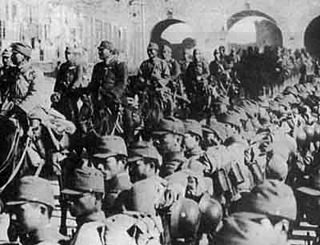 W
WThe Shanghai Expeditionary Army was a corps-level ad hoc Japanese army in the Second Sino-Japanese War.
 W
WHisao Tani was a lieutenant general in the Imperial Japanese Army in the Second Sino-Japanese War. He was implicated in the Nanjing Massacre and was executed by the Chinese government.
 W
WHeisuke Yanagawa was a general in the Imperial Japanese Army in World War II.